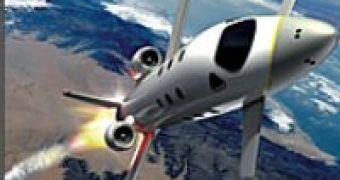This week, Astrium, a wholly owned subsidiary of the European Aeronautic Defence and Space Company EADS, the largest European aerospace corporation, presented a revolutionary new vehicle for space tourism the size of a business jet.
The Astrium space jet will be able to carry four passengers 100 km up into space, providing an exciting experience of near weightlessness, more than the three minutes provided today by other subspace aircraft. Presently, other companies use modified planes that ascend steeply to an altitude of 30 thousand feet (around 10 km) before plunging into a controlled free fall, to simulate the lack of gravity.
Investing in space technology now may be similar to buying Microsoft shares two decades ago: highly profitable. It seems the next industry area to experience an economic boom will be the exploration of space and space tourism.
This jet will take off and land conventionally from a standard airport using its jet engines, but as it reaches an altitude of about 12 km, the rocket engines will be ignited to give sufficient acceleration to reach 100 km. Only 80 seconds will be necessary to climb to an altitude of 60 km using thrusters, and after that, they will be shut down to let inertia carry the craft on to over 100 km, where passengers will become one of the very few to experience zero gravity in space.
The cost per flight per passenger would be around 150,000 to 200,000 euros, but the really good thing is that this could be a precursor for rapid transport 'point-to-point' vehicles or quick access to Space - opening up previously unexplored territory.
In recent years, space tourism has been a refreshing alternative and even if for the moment the pioneers pay around $20 million for a trip to the International Space Station, future trips will get more affordable, as many companies are trying to get a piece of the space cake.

 14 DAY TRIAL //
14 DAY TRIAL //